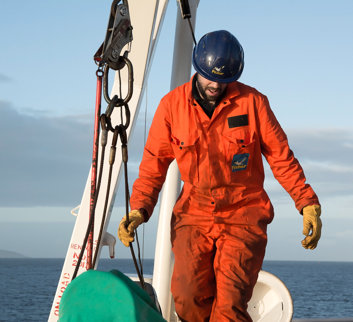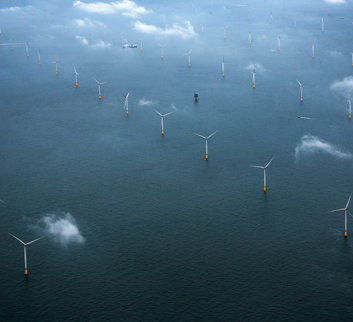
Why greenhouse gas (GHG) emissions is important
James Fisher is committed to minimising and possibly eliminating the detrimental impact of greenhouse gas (GHG) emissions from our operational activities.
We have stated our commitment to setting net zero emissions targets in alignment with the Paris Climate Agreement. We also recognise the importance of helping our customers reach their own net zero emissions targets.
GREENHOUSE GAS (GHG) EMISSIONS
| KPI | BASELINE(2021) | TARGET | TARGET DATE |
| Scope 1 and Scope 2 emissions | 114,374 tOOze | During 2022, we will set clear targets, with the aim to report in 2023. | |
| Scope 3 emissions | We will continue to evaluate and measure Scope 3 emissions in line with the GHG Protocol Standards. We aim to report a baseline and targets in two to three years. | ||
Progress in 2021
We engaged the services of specialist advisors and conducted an extensive emissions footprint reporting and consolidation exercise across the group, preceded by a coaching session on reporting definitions, standards and criteria. This was to ensure that those responsible for reporting in a diverse group of operating companies do so effectively for this and future reporting cycles. As a result, our reported emissions footprint has increased, reflecting emissions from international activities and leased assets in our baseline, some of which were not captured in the past.
GHG emissions were calculated in accordance with the requirements of the GHG Protocol Corporate Accounting and Reporting Standard for the 1-year period spanning 1 October 2020 to 30 September 2021 (our target base year). Emission conversion factors from the UK Department for Business, Energy and Industrial Strategy (BEIS) and International Energy Agency (IEA) were applied in the calculations. The baseline we have reported for Scope 1 and Scope 2 will be the reference against which future emissions footprint calculations will be benchmarked.
While the focus was to properly document our Scope 1 and Scope 2 emissions, we have commenced with identifying and measuring our Scope 3 emissions. This is a much more complicated exercise given the diverse and fragmented nature of our businesses. The exercise will involve coordinated engagement with key partners within our supply chains and we will work to influence their journey towards net zero through our actions.
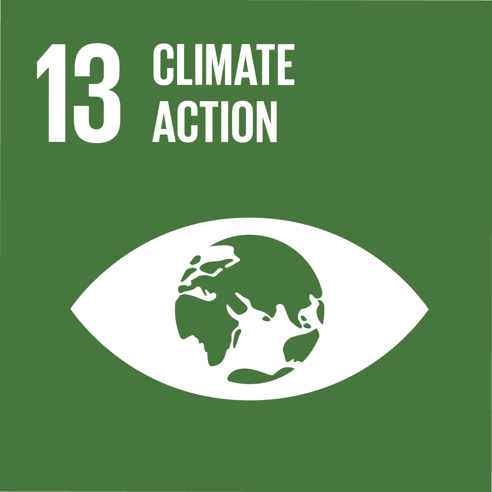
Scope 1
Scope 1 emissions are direct emissions from owned or controlled sources and activities – fuel combustion on-site in gas boilers, fleet vehicles, furnaces, air-conditioning leaks.
Emissions from mobile combustion, mainly our vessels and fleet vehicles, accounted for 98.9% of our Scope 1 emissions, with a 1% contribution from stationary combustion (space heating), and 0.1% from fugitive sources (refrigerants).
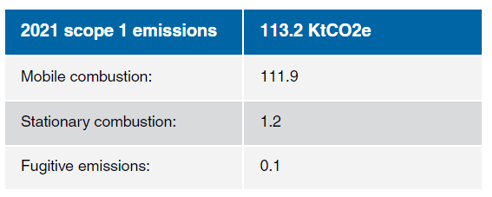
Scope 2
Scope 2 emissions are indirect emissions from the generation of purchased electricity, steam, heating and cooling.
Purchased electricity accounted for 94% of our emissions in this scope, with a 6% contribution from purchased chilled water. Our Scope 2 emissions were found to be relatively low as many of our facilities in the UK and Singapore, are already sourcing 100% renewable energy from service providers. As part of our Scope 2 emissions abatement efforts, we will plan to roll out this best practice across all regions, encouraging purchase of all energy from renewable sources, where available.

Scope 3
Scope 3 emissions are indirect emissions from sources and activities that we neither own nor control but we indirectly impact within our value chain.
As a first step and for 2021, we measured and consolidated emissions impact from business travel only. The reason for prioritising this category is that the nature of support services we provide across our operating companies involves frequent travel and mobilisation on and off work sites around the world.
Emissions from air travel accounted for 86.3% of our Scope 3 emissions (86.8%), with an 8% contribution from hotel stays, 5.2% from rentals and travel reimbursements, and less than 1% from rail travel.

How we will deliver against targets
We're focused on continuing to drive efforts in lower our greenhouse gas (GHG emissions) by looking to the following:
- Develop net zero emissions pathway
- Improve reporting and visibility
- Define Scope 3 mapping criteria
Develop net zero emissions pathway
Following an extensive Scope 1 and Scope 2 footprint review and the setting of an interim target, efforts are underway to:
- Model emissions reduction pathway at group and operating company levels
- Map our approach to net zero emissions
This will be done in alignment with the SBTi guidance and target setting criteria.

Improve reporting and visibility
In parallel with the extensive emissions reporting and consolidation exercise of 2021, we are developing a centralised, group-level emissions reporting and visualisation portal. Once completed and rolled out, this tool will ease and standardise internal reporting across all our operating companies by enabling:
- Automated conversion calculations from any unit into the tCO2e
- Data and report submittal at any day and time of year
- User-friendly, live dashboard visualisation, with reporting consolidated at group and operating company level.
Ultimately, we are aiming for near real-time visibility of our emissions footprint to improve visibility across our global operation and facilitate proactiveness in our monitoring and reduction efforts.
For the benefit of our external stakeholders, we will continue to report our emissions footprint and energy consumption in accordance with the UK SECR regulations, communicate our environmental impact in alignment with the CDP guidelines, and highlight identified risks, opportunities, and our business resilience to climate change through the TCFD reporting.
Define Scope 3 mapping criteria
The GHG Protocol Corporate Value Chain (Scope 3) Accounting and Reporting Standard has set 15 categories for scope 3, of which we evaluated emissions from business travel in 2021. We are now assessing which of the 15 categories are most material for our operating companies and will work with key suppliers and customers in our value chain to identify, map, and measure Scope 3 emissions footprint, and put in place effective emissions reduction programmes.
Scope 3 emissions categories
-
- Purchased goods and services
- Capital goods
- Fuel- and energy-related activities not included in Scope 1 or Scope 2
- Upstream transportation and distribution
- Waste generated in operations
- Business travel
- Employee commuting
- Upstream leased assets
- Downstream transportation and distribution
- Processing of sold products
- Use of sold products
- End-of-life treatment of sold products
- Downstream leased assets
- Franchises
- Investments
Key priorities under the planet pillar of our sustainability strategy
Along with greenhouse gas (GHG) emissions, these are the key priorities under our planet pillar.

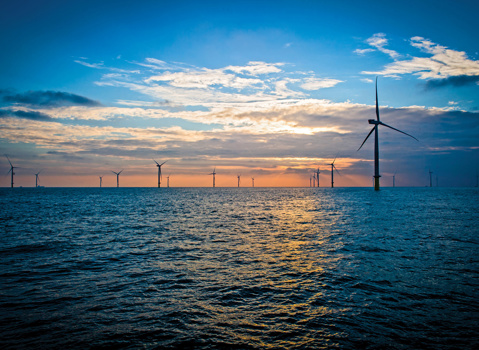
You may also be interested in
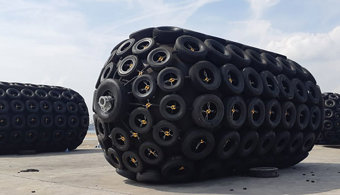
James Fisher strengthens APAC commitment with Japan entity
Read article
Shipping through the generations: World Maritime Day 2022
Read article
JF Renewables supplies HV support services to Formosa 2 wind farm in Taiwan
Read article
James Fisher and Sons plc half year results for the six months ended 30 June 2022
Read article
James Fisher Renewables and ScanTech Offshore champion North American offshore wind with VP appointment
Read article
James Fisher Renewables backs APAC offshore wind growth with key appointments
Read article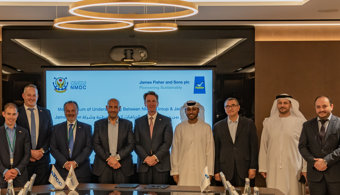
James Fisher and Abu Dhabi's NMDC Group sign strategic agreement
Read article
James Fisher Renewables commits to further investment in Taiwan to support local government
Read article


